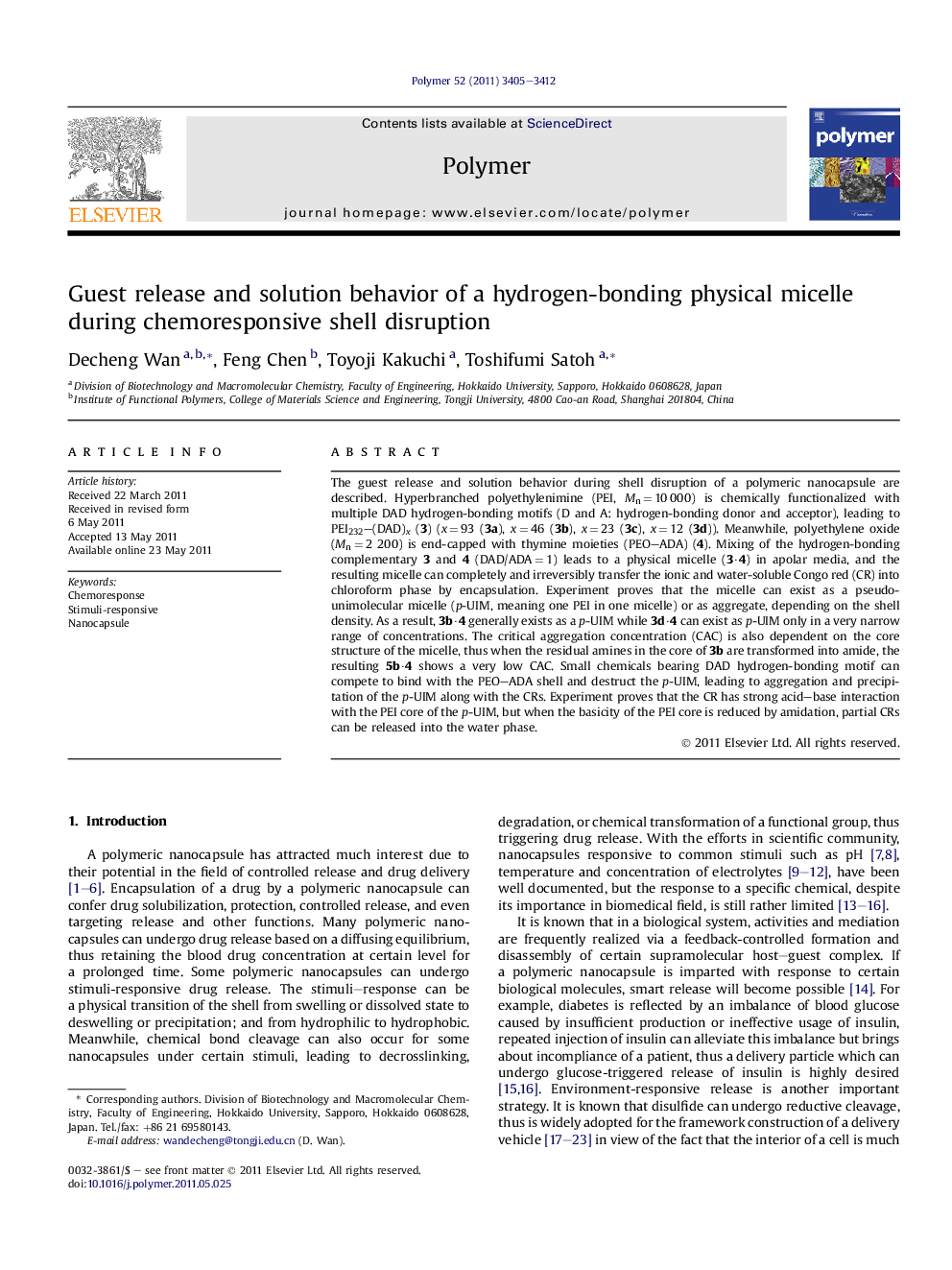| کد مقاله | کد نشریه | سال انتشار | مقاله انگلیسی | نسخه تمام متن |
|---|---|---|---|---|
| 5184426 | 1381047 | 2011 | 8 صفحه PDF | دانلود رایگان |

The guest release and solution behavior during shell disruption of a polymeric nanocapsule are described. Hyperbranched polyethylenimine (PEI, Mn = 10â000) is chemically functionalized with multiple DAD hydrogen-bonding motifs (D and A: hydrogen-bonding donor and acceptor), leading to PEI232-(DAD)x (3) (x = 93 (3a), x = 46 (3b), x = 23 (3c), x = 12 (3d)). Meanwhile, polyethylene oxide (Mn = 2 200) is end-capped with thymine moieties (PEO-ADA) (4). Mixing of the hydrogen-bonding complementary 3 and 4 (DAD/ADA = 1) leads to a physical micelle (3·4) in apolar media, and the resulting micelle can completely and irreversibly transfer the ionic and water-soluble Congo red (CR) into chloroform phase by encapsulation. Experiment proves that the micelle can exist as a pseudo-unimolecular micelle (p-UIM, meaning one PEI in one micelle) or as aggregate, depending on the shell density. As a result, 3b·4 generally exists as a p-UIM while 3d·4 can exist as p-UIM only in a very narrow range of concentrations. The critical aggregation concentration (CAC) is also dependent on the core structure of the micelle, thus when the residual amines in the core of 3b are transformed into amide, the resulting 5b·4 shows a very low CAC. Small chemicals bearing DAD hydrogen-bonding motif can compete to bind with the PEO-ADA shell and destruct the p-UIM, leading to aggregation and precipitation of the p-UIM along with the CRs. Experiment proves that the CR has strong acid-base interaction with the PEI core of the p-UIM, but when the basicity of the PEI core is reduced by amidation, partial CRs can be released into the water phase.
Journal: Polymer - Volume 52, Issue 15, 7 July 2011, Pages 3405-3412